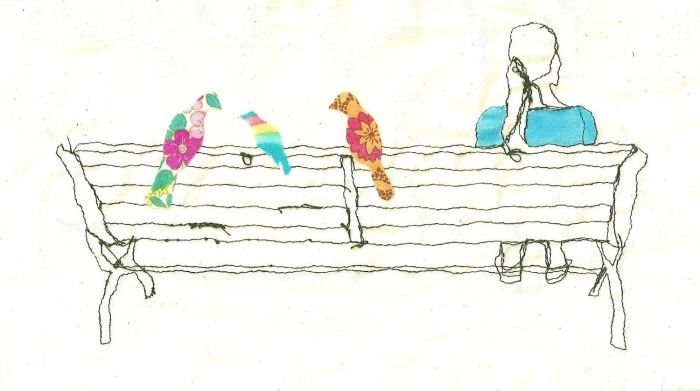
When you think of a piece of artwork, what springs to mind? Paintings? Drawings? Sculptures? How about embroidery?
To many, embroidery is a way of putting patterns and the like onto clothes, but it’s actually a whole art form in and of itself. We spoke to embroidery artist Sarah Walton about the art form, how she got into it, how she goes about making her art and tips for those who might like to have a go themselves…
How and when did you first get into embroidery art?
I was always making things as a child, whether it be dolls house furniture, drawing cartoons or painting, and I loved art and textiles at school. I’m inspired by artists such as Egon Schiele and illustrators such as Aubrey Beardsley and Julie Verhoeven, and I spent a lot of my teenage years trying to draw people in a similar style. I inherited my Nana’s Singer sewing machine in my teens, and when I went to art college I began experimenting by drawing with my sewing machine.

What is it about this particular type of art that you like so much?
Embroidery and making clothes can often be very neat and orderly, but I like being expressive with the machine, as if the needle and thread are a pencil and the colourful patterned fabric I use is the paint. I find it quite fun and playful, almost like reliving my childhood, just getting lost in your imagination, it can be very therapeutic.
I also like the tactile nature of working with fabric and thread, and using my hands to create. I love drawing people, and I find the thread lends itself well to expressing the human figure and  the folds in clothes, it’s also great for drawing dogs’ faces! Human faces are very hard on the sewing machine; I’m still trying to make faces not look cartoonish. I particularly enjoy choosing the fabric to add a colour accent to the piece. The array of colours and patterns available is exciting; when I go to a fabric shop, it’s like being in Aladdin’s cave. I’m particularly drawn to Liberty fabrics, as they are quintessentially English and the intricate floral patterns seem to suit my illustrations wonderfully.
the folds in clothes, it’s also great for drawing dogs’ faces! Human faces are very hard on the sewing machine; I’m still trying to make faces not look cartoonish. I particularly enjoy choosing the fabric to add a colour accent to the piece. The array of colours and patterns available is exciting; when I go to a fabric shop, it’s like being in Aladdin’s cave. I’m particularly drawn to Liberty fabrics, as they are quintessentially English and the intricate floral patterns seem to suit my illustrations wonderfully.
Do you have a typical process from start to finish?
I start with a pencil and paper and work on the composition. This can mean drawings things over and over again. I photograph my work a lot to compare. Once I have the idea, I will move onto the sewing machine. I try to make the initial line drawing in one go, then I cut any loose threads, add or remove stitches if needs be and check that I like the finished piece before I go any further. Once I have the black drawing sorted, I look in my fabric box and cut samples then take photographs to figure out which looks best. Then, I basically appliqué it onto the piece, all with the sewing machine.
Do you use/need any special equipment?
My sewing machine is an old 70’s Singer machine. Who knows what my illustrations would look like with a brand new sewing machine? I still use my Nana’s little silver heron sewing scissors, so tiny and helpful to cut threads with. A seam ripper is always useful, too.
Do you prefer machine or hand stitching?
I only use my sewing machine. If I do any hand stitching it is just to put the odd stitch in. I like the celerity of using the sewing machine, probably because the process from start to finish of a piece can be quite long and I don’t have enough patience!

However, I think it may be what makes my style – the imperfect nature of the thread and not really knowing how it will turn out until I turn the fabric over and hold it up. I don’t think hand embroidery would work well with my style. I tried to stitch a person’s face once to achieve detail but it didn’t turn out too well, I think it lacked vivacity.
Do you have any tips for anyone who thinks they’d like to give it a go?
Practise drawing before you move on to the machine. Invest in some good quality thread – I always buy Guttermans as it is stronger than many others I’ve tried – the less thread breaks the better! It can be a long process, so have patience. Although, saying that, when you’re on the sewing machine, go fast! Don’t worry about making mistakes, imperfections can often look great.
Check out more of Sarah’s work over at her website, or you can buy prints at her Etsy shop.